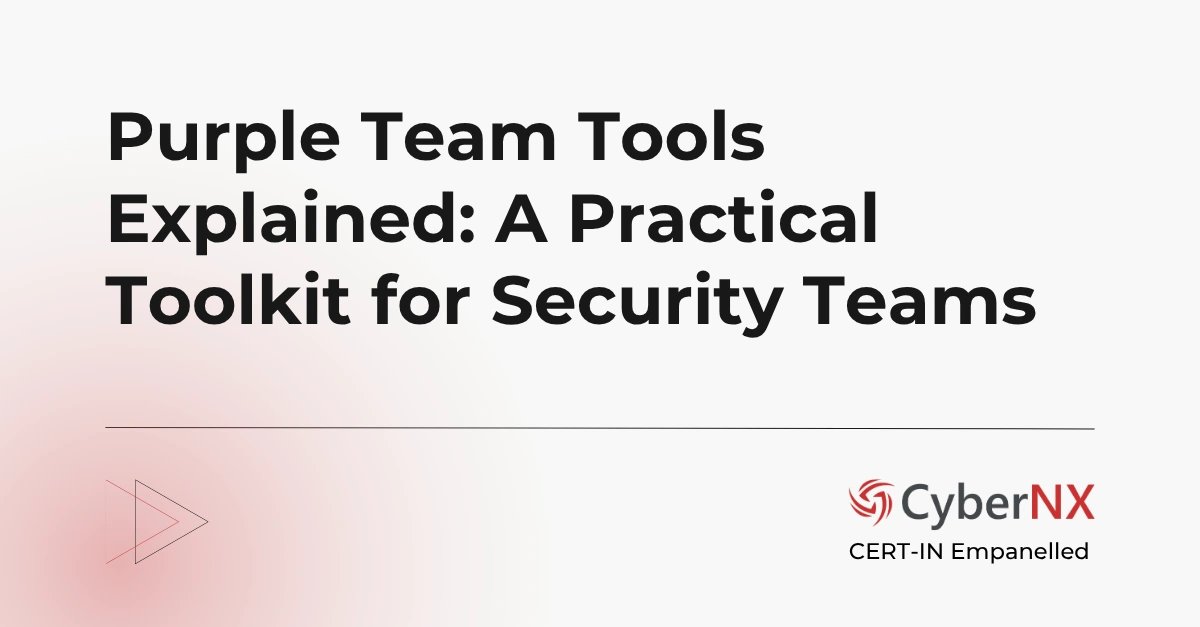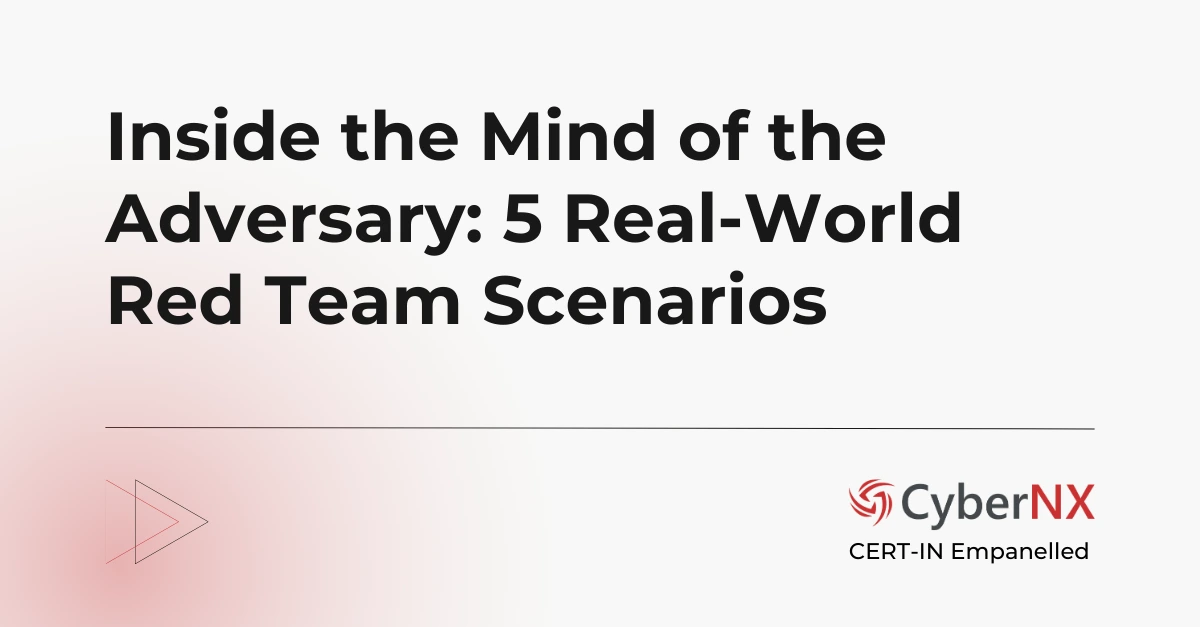Security measures in place might sometimes look impeccable on paper. But what if adversaries walk past them undetected? That’s the scenario many CISOs may face when theoretical protection does not translate to real world resilience.
Red Team exercise, a deliberate, adversarial simulation shows organizations what could go wrong if attackers come knocking. With rising threats and stealthier adversaries, red teaming has evolved from a necessity to a must-have for modern enterprises.
Red Team Exercise: Definition
A red teaming exercise can be understood as a security assessment performed by a group of ethical hackers. The red teamers take the role of a real-world attacker and test your organization’s detection, response and resilience.
Red team exercise is often compared to traditional penetration testing. However, the goal here is not limited to identifying vulnerabilities.
With a bigger scope and deeper level exploitation techniques employed by a hacker, red teaming focuses on a specific objective. This can be accessing sensitive data, bypassing SOC or gaining access to key accounts.
It answers high-stakes questions:
- Can attackers remain undetected inside our systems?
- Can we stop them before they reach critical assets?
What Involves a Red Team Exercise?
Red team exercises are so designed to mirror threat actor behaviour and primarily involves 3 phases.
1. Setting Objectives and Planning
A red team exercise begins with setting security objectives. IT security leaders or senior management officials meet, and red teamers sit together defining, planning and aligning clear goals.
The objectives vary from exfiltrating sensitive data and testing lateral movement detection to bypassing physical controls. Objectives ensure that the red teaming engagement is aligned with real business risks.
2. Building a Team of Professionals
Next comes the team formation. The Red Team may consist of ethical hackers, social engineers, malware specialists and now-a-days AI or data science experts. They operate under strict rules of engagement, within legal and ethical boundaries.
There are couple of ways organizations do it. Either they build the team through hiring or outsource to red teaming service providers. The latter is more prevalent.
3. Multi-stage Execution Phase
During the execution phase, the Red Team launches multi-stage attacks to breach digital and physical defences of the organization. Tactics include phishing, USB drops, exploiting vulnerabilities and establishing persistence.
They focus on stealth, attempting to bypass detection tools and response mechanisms. Both physical and virtual red teaming is done. Now, AI has also come into the picture.
Finally, the red team exercise has reporting and analysis phase that includes turning the raw activity into valuable insights. It shows how your organization performs under attack.
Red Team Exercise Objectives and Metrics
Red Team exercise is most valuable when its success is measurable. Objectives often focus on breaching specific systems, accessing protected data, or testing incident response playbooks. But more importantly, success is evaluated through metrics like:
- Time to detect intrusion (TTD)
- Time to respond and contain (TTR)
- Alert fidelity and SOC responsiveness
- Kill chain stage at which detection occurred
- Impact to critical business functions
These metrics aren’t just technical—they’re operationally revealing. They help business leaders see where investment is needed and where overconfidence may be blinding the organization to real risk.
What is an Example of a Red Team Exercise?
To understand its depth, let’s explore three real-world-inspired examples:
1. Physical Intrusion
Red Teamers pose as delivery personnel to enter the server room. Once inside, they plug a rogue device into the internal network. Despite CCTV and badge access systems, no alerts are raised.
2. Phishing Simulation
A crafted email mimics a partner vendor’s invoice, tricking an employee into entering credentials on a fake login page. The Red Team uses those credentials to access internal tools and laterally move to high-value systems.
3. Malware Deployment
A benign-looking PDF attachment carries a payload that connects back to a C2 server. The malware sits silently, gathering data and opening persistence paths—all without detection.
Conclusion
Red Teaming should be seen as a practice that validates your security defences. It opens the eyes of the in-house security teams in a world where adversaries break in quietly. Red Teaming exercises help act ahead of them and secure what matters most.
Our red teaming services can help you understand your existing security posture and response capabilities. Contact us today!
Red Teaming Exercise FAQs
How often should an organization conduct a Red Teaming exercise?
The frequency depends on your industry, threat profile, and recent infrastructure changes. For most enterprises, conducting a Red Teaming exercise once or twice a year ensures evolving threats are continuously accounted for. However, after major cloud migrations, M&A activities, or changes in security leadership, an additional round is highly recommended.
What’s the difference between Red Teaming and Bug Bounty programs?
Red Teaming is a controlled, covert simulation targeting specific objectives to test detection and response. Bug bounty programs, on the other hand, crowdsource vulnerability discovery by inviting external researchers to find and report flaws-usually with limited scope and visibility. Red Teaming is strategic; bug bounties are opportunistic.
Can Red Teaming be customized for specific compliance or regulatory needs?
Yes. Red Teaming can be designed to align with compliance frameworks like ISO 27001, PCI-DSS, or HIPAA by focusing on protected assets, access controls, or data handling workflows. However, it goes beyond checklist compliance by revealing real-world security failures that policies alone can’t catch.
Does Red Teaming disrupt normal business operations?
When properly scoped and managed, Red Teaming is designed to be non-disruptive. Teams simulate attacks without causing outages or alert fatigue. That said, it’s important to coordinate internally so key systems are monitored without tipping off operational teams-ensuring authenticity without collateral impact.





